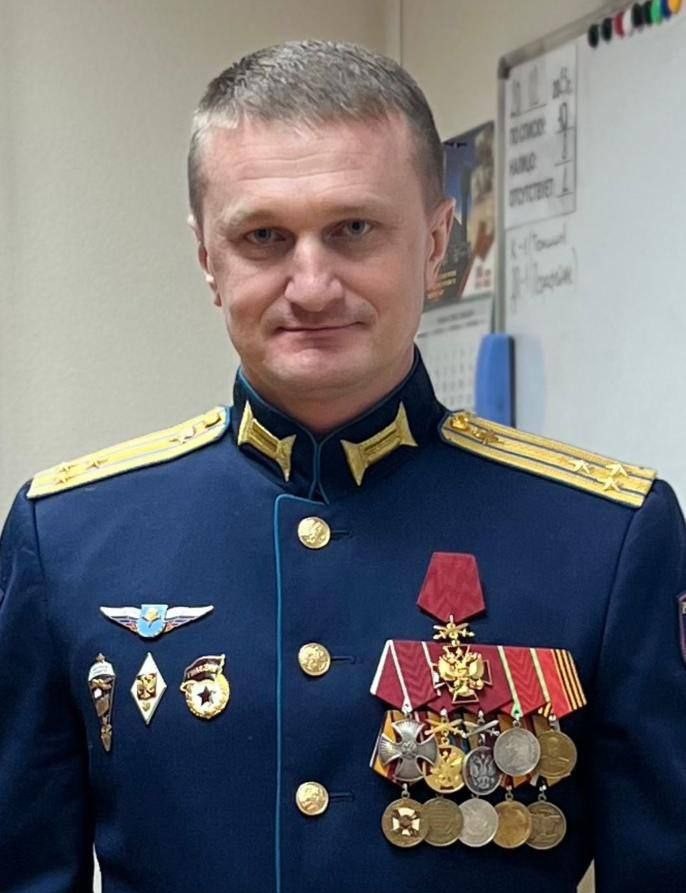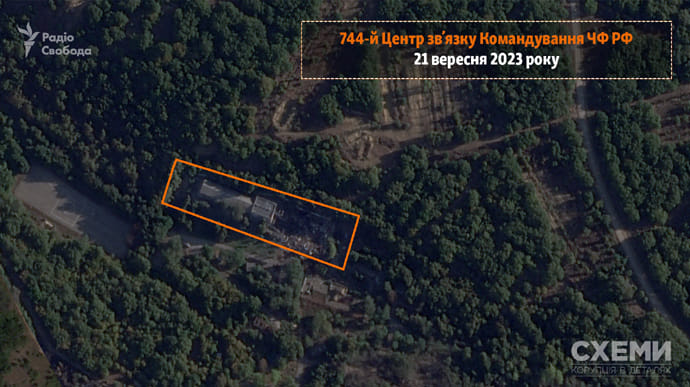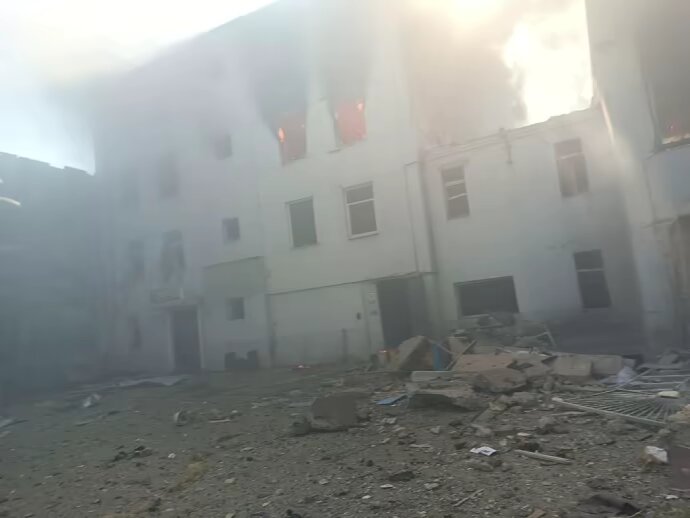Last week, the Ukrainian Army advanced further on the southern front and continued to decimate Russian military targets in Crimea and other occupied territories of Ukraine.
According to Ukraine's Special Operations Forces, the Ukrainian missile attack on the Russian Black Sea Fleet headquarters in occupied Sevastopol (Crimea, southern Ukraine) allegedly eliminated 34 Russian officers.
A lack of artillery support and heavy casualties accompanied Russian ill-conceived counterattacks on the southern and eastern fronts. None of the Russian attempts to regain lost ground in the Zaporizhzhia and Donetsk Oblasts have been successful.
The strategy of attrition warfare allowed Ukraine’s Armed Forces to keep mowing down Russian artillery and air defense systems, softening the defensive capabilities of the Russian Army. The tactic of attacking with small groups of infantry allowed Ukraine to minimize losses of personnel and armor. Such tactics proved effective and helped the Ukrainians slowly but steadily advance toward the Russian strongholds of Verbove and Novoprokopivka in the Zaporizhzhia Oblast (southeastern Ukraine).

Map by Deep State.
However, it remains to be seen whether the steady loss of personnel, military equipment, and morale of the Russian Army will lead to the collapse of the southern front within the next month or two. The rainy season in late fall will create muddy terrain on the battlefields in Ukraine, making it virtually impossible for Ukrainian mechanized brigades to conduct effective maneuver warfare and make significant breakthroughs.
Ukraine launches hunt for Russia's top military commanders
On 18 September, Aleksandr Khodakovsky, the Russian Vostok Battalion commander, confirmed the death of Colonel Andrey Kondrashkin during hostilities in eastern Ukraine. Kondrashkin commanded the 31st Guards Air Assault Brigade of the Russian Army.
According to Yurii Butusov, a Ukrainian war reporter, the 31st Brigade participated in all major battles of the Russian all-out war against Ukraine, starting with the Battle of Hostomel Airport near Kyiv in February and March of 2022. Kondrashkin was responsible for repelling attacks by Ukraine’s 3rd Assault Brigade near the village of Andriyivka in the Donetsk Oblast (eastern Ukraine). Ukraine’s Armed Forces entered Andriyivka through Kondrashkin’s defense sector. As a result of the Ukrainian offensive in that area, Andriyivka was liberated, and Kondrashkin was allegedly killed.

Credit: Aleksandr Khodakovsky via Telegram.
The Ukrainian Army destroyed the combat capabilities of elements of the Russian 72nd Motorized Rifle Brigade (3rd Army Corps), the 31st Air Assault Brigade, and the 83rd Guards Air Assault Brigade during the liberation of Andriyivka and Klishchiyivka in the Bakhmut sector, according to Oleksandr Syrskyi, the Commander of the Ukrainian Ground Forces.
The death of Colonel Kondrashkin confused the coordination and management of Russian troops in the Bakhmut sector. It could have been one of the factors that led to the collapse of the Russian defense in Klishchiyivka and Andriyivka. As a result, Ukrainian troops managed to take control of commanding heights south of Bakhmut and cut off one of the supply routes for the Russian forces between the occupied cities of Bakhmut and Horlivka (a major logistics hub southwest of Bakhmut) via the recently liberated Klishchiyivka in the Donetsk Oblast.

Map by Deep State.
Although the Russians can still use another road from Horlivka to Bakhmut, it is already under heavy fire from Ukrainian tube artillery. As a result, the timely supply of fuel and ammunition to the Russian garrison in occupied Bakhmut from the southwest has become difficult. However, the Russians can still supply their grouping in Bakhmut from the east.
While Ukrainian troops steadily pushed forward on the southern flank of the Bakhmut sector, Russian counterattacks managed to halt the Ukrainian advance north of Bakhmut. One of the Russian soldiers fighting near Bakhmut wrote on Telegram that the Russian Army suffered heavy losses during such counterattacks. According to him, Bakhmut and its vicinities have become a trap for the Russian troops due to the effective work of Ukrainian artillery.
On 19 September, Russian media reported successful Ukrainian strikes on the headquarters of the 7th Airborne Division of the Russian Army in the Kherson Oblast (southern Ukraine).
The Ukrainian attack on the command and field post killed many officers. The exact number of casualties is carefully concealed, according to the Russian Telegram channel VCHK-OGPU. At the time of the strikes on the headquarters, Russian officers of the 7th Airborne Division were engaged in daily planning, Evgeny Khanin, chairman of the organization of veterans of Russia's 7th Guards Division, confirmed to VCHK-OGPU.
The next day, on 20 September, Ukraine attacked the command post of the Russian Black Sea Fleet near the village of Verkhniosadove in occupied Crimea (southern Ukraine). Satellite images from Planet Labs showed that at least one building on the territory of the Russian military base was damaged, and part of it was destroyed due to the explosions in the area.

Satellite image by Planet Labs via Radio Liberty.
According to a map of the Russian military infrastructure in occupied Verkhniosadove published by Radio Liberty, the 744th Communications Center of the Russian Black Sea Fleet Command is located there.

Map by Deep State.
On 20 September, the occupation administration of Sevastopol (Crimea, southern Ukraine) reported that Russian air defense had allegedly shot down Ukrainian kamikaze drones in Verkhniosadove and Kacha near Sevastopol, which caused a fire.
According to Militarnyi, a Ukrainian OSINT group, the Russian military planned to establish a reserve command center of the Russian Black Sea Fleet headquarters in Verkhniosadove after recent Ukrainian attacks on Russian military infrastructure in occupied Sevastopol. Thus, the Ukrainian strikes on the Russian communications center in Verkhniosadove may have targeted the Russian top military command. It is currently unknown whether the Russian Black Sea Fleet Command suffered any losses after the attack on 20 September.
On 21 September, Ukraine’s Security Service (SBU) and Armed Forces struck a secret Russian base in the occupied city of Melitopol in the Zaporizhzhia Oblast in a joint operation, Ukrainska Pravda media outlet reported, citing a source in SBU.

Map by Deep State.
SBU first identified that Russian troops had organized a headquarters at the local motor plant before passing information to the military to target the location. The joint operation allegedly wounded the commander of Russia’s 58th Army fighting in the Zaporizhzhia direction and their chief of staff.

The source claims several dozen Russian officers were also targeted, with around ten killed in the strike. The operation demonstrated Ukraine’s continued ability to gather intelligence and strike military targets behind Russian lines.
On 21 September, Ukraine conducted a coordinated drone and missile attack on the military airfield in occupied Saky (Crimea). First, Ukrainian kamikaze drones overwhelmed the Russian air defense system, and then Ukrainian-made Neptun missiles were launched to hit targets at the airfield.

Map by Deep State.
The airfield in Saky hosted at least 12 Russian combat aircraft (Su-24 and Su-30) and the Pantsir air defense system at the time of the attack. There was also a training base for the operators of the Iranian-made Mohajer drones, used by the Russians to coordinate their air attacks and as a kamikaze drone. It is currently unknown whether any Russian aircraft were damaged during the attack on the airfield in Saky.
On 21 September, several waves of Ukrainian kamikaze drones attacked occupied Crimea. Local residents reported explosions in Yevpatoria, Simferopol, Sevastopol, Saky, Novofedorivka, and other settlements. Russian officials claimed that air defense took down 19 drones. Ukraine is systematically destroying military targets on the western coast of Crimea, which reduces the ability of Russian air defense and air force to respond to drone and missile attacks launched from the Ukrainian-controlled Odesa and Mykolayiv Oblasts.

Map by Deep State.
On 22 September, Ukraine launched a complex operation to attack the Russian Black Sea Fleet headquarters in occupied Sevastopol (Crimea). Ukraine likely used British Storm Shadow missiles to strike one of the most protected military targets in occupied Crimea during the Russian Black Sea Fleet Command meeting.
https://twitter.com/EuromaidanPress/status/1705280540574716147
Trending Now
In the operation codenamed Crab Trap, Ukraine's Special Operations Forces (SOF) passed intelligence to the Air Force of Ukraine for strikes. According to SOF, at least 34 Russian officers were killed during the attack on the Russian Navy's headquarters, with Russian top generals among them, including Aleksandr Romanchuk and Oleg Tsekov.

Credit: mil.ru
Colonel General Aleksandr Romanchuk is the commander of the grouping of Russian forces in the Zaporizhzhia sector in southeastern Ukraine, where the Ukrainian counteroffensive is gaining momentum. Lieutenant General Oleg Tsekov is the commander of the 200th Separate Motor Rifle Brigade of the Coastal Forces of the Northern Fleet of the Russian Navy. The alleged death of these top generals may disrupt the coordination of the Russian forces on the southern front.
Ukrainian attacks on military targets inside Russia
Apart from the attacks on Russian command posts in the occupied territories of Ukraine, Ukraine also launched kamikaze drone strikes on the military infrastructure in Russia. On 20 September, a long-range kamikaze drone hit a Russian oil depot in Sochi (southern Russia).
https://twitter.com/EuromaidanPress/status/1704464925316239672
Oil depots in southern and southwestern parts of Russia provide fuel to the Russian Black Sea Fleet and Russian Armed Forces in the occupied Crimea, Kherson, and Zaporizhzhia Oblasts.
Last week, Russia also lost several aircraft on its territory. According to Ukrainian intelligence, on 18 September, "unknown saboteurs" blew up two planes and a helicopter at the Chkalovsky airfield near Moscow.
According to Russia's Investigative Committee, unknown persons planted explosives at Chkalovsky airfield, which is carefully guarded. The explosions damaged AN-148 and IL-20 aircraft of the 354th Special Purpose Aviation Regiment of the Russian Army.

The tail part of the MI-28N helicopter, which was actively involved in shooting down kamikaze drones over the Moscow region, was also damaged by the explosion. Another AN-148, which was next to other planes at the airfield, was slightly damaged, according to Ukraine's intelligence.
The Chkalovsky military air base unofficially serves as the main aviation base of the Russian Aerospace Forces. It is located 31 kilometers northeast of Moscow. Russian government planes, Doomsday planes (an unofficial denomination of a class of aircraft used as an airborne command post for Russian military and political leadership in case of a nuclear war), and special reconnaissance planes are based at the Chkalovsky airfield.
Southern Front
Russia caught Ukraine's Air Force off guard by attacking Ukrainian airfields in southern Ukraine with drones. An upgraded Russian kamikaze drone, Lantset, reportedly flew over 65 kilometers to hit a Ukrainian fighter jet at the airfield in Kryvyi Rih (the Dnipropetrovsk Oblast) on 19 September.
https://twitter.com/UAWeapons/status/1704157972937498935
Russia uses Lantset kamikaze drones to hit targets within a range of 40 kilometers. A Lantset attack on the Ukrainian airfield more than 60 kilometers behind the frontlines means Russia started to use a modified version of a Lantset drone, which contains more fuel in the tank. Thus, from now on, Ukraine's Armed Forces must be extremely careful while using US-made HIMARS multiple rocket launchers. Newly modified Lantset kamikaze drones can operate deep behind the Ukrainian lines in search of the HIMARS that hit Russian military equipment, command posts, fuel depots, and ammunition dumps within a range of 70 kilometers.
Ukraine continues to degrade Russian firepower by destroying Russian artillery systems in large numbers every day. According to the General Staff of Ukraine's Armed Forces, last week, Russia lost 233 artillery systems (with the average weekly loss of Russian artillery systems being 73 units). Oryx, a Dutch open-source intelligence monitoring group that documents Ukrainian and Russian military equipment losses based on photo and videographic evidence, confirms that Russia continued to lose artillery systems in large numbers in September.
The lack of Russian reserves and artillery systems may create conditions for a Ukrainian breakthrough on the southern front. At this point, the grinding advance of the Ukrainian Army south and southwest of Robotyne in the Zaporizhzhia Oblast toward the Russian strongholds in Novoprokopivka and Verbove continues.

Map by Deep State.
Last week, Ukrainian mechanized units were spotted on the western outskirts of Verbove, behind the Russian Dragon's teeth (anti-tank barriers).
Notable development. After weeks of mostly small-scale dismounted infantry assaults, it looks like Ukraine's 82nd Air Assault Brigade is assaulting with armor again towards Verbove past the anti-tank obstacle line with Strykers, Marders, and MaxxPro MRAPs. https://t.co/z1d4bmZ22W
— Rob Lee (@RALee85) September 20, 2023
Russian sources reported that Ukrainian forces broke into Verbove on 22 September and continued attacking the town with armored vehicles as of 24 September. Geolocated combat footage posted on 24 September showed a Ukrainian BMP infantry fighting vehicle operating inside the western part of Verbove. Such an advance means that Ukraine's Armed Forces have breached the second Russian fortified defensive line (out of three heavily fortified lines) southwest of Robotyne.
Furthermore, Ukrainian troops allegedly entered Novoprokopivka, south of Robotyne. Heavy fighting inside this Russian stronghold is ongoing. The Ukrainian Army is gradually advancing toward occupied Tokmak, an important logistics hub and railroad junction. Tokmak is now around 22 kilometers away from the frontlines.
If the Ukrainians push Russian troops out of their Novoprokopivka stronghold and approach the third line of Russian fortified defenses, Russia will need to deploy more reserves to prevent a Ukrainian breakthrough. It is unclear whether the Russian Armed Forces have the necessary reserves to stop the Ukrainian Army's further advance to the south.
Related:
- Weekly Frontline Update: Ukrainian counteroffensive is gaining momentum
- Operation Crab Trap: Ukrainian military gives some details on Sevastopol Russian Navy HQ attack
- ISW: Winter will not freeze Ukraine's counteroffensive
- Ukrainian counteroffensive: genocide of Russian artillery





